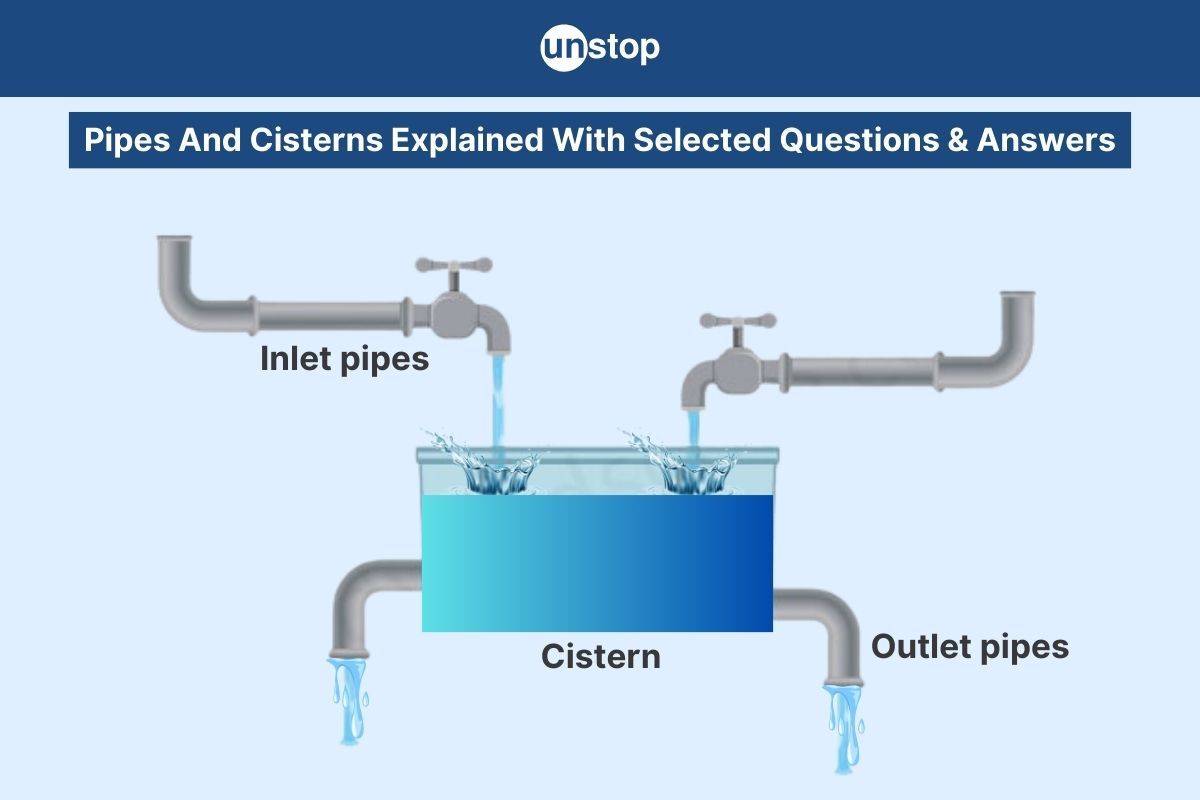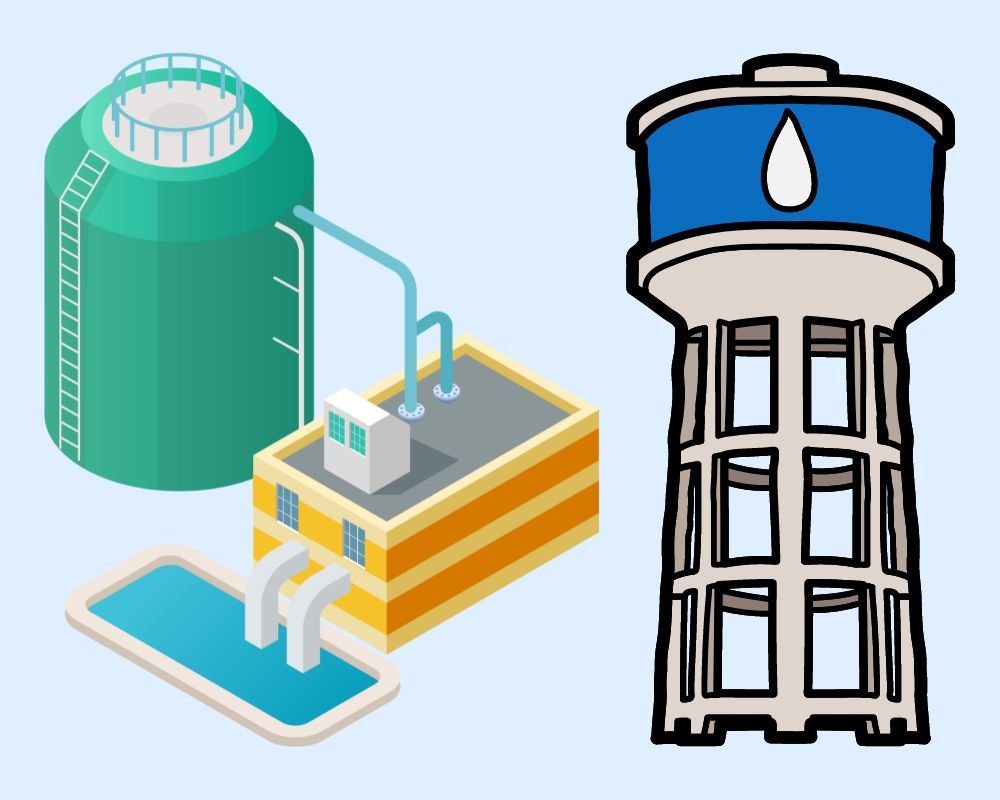- Step 1: The Groundwork
- Step 2: The Three Sections
- Step 3: Practice Makes Improvement
- The Secret Ingredient
- Understanding Basics Of Number Series
- Types Of Number Series Reasoning Questions
- Addition & Multiplication In Number Series
- Square & Cube-Based Number Series Patterns
- Missing Terms & Arranging Sequences
- Tricks & Tips For Solving Number Series
- Selected Number Series Questions With Solutions
- Frequently Asked Questions (FAQs)
- Must Know Terminologies in Blood Relation Questions
- Basic Approaches to Solve Blood Relation Questions
- Types Of Blood Relation Questions
- Tips For Solving Blood Relation Questions
- Multiple Choice Questions (MCQs) with Detailed Explanation
- Conclusion
- Frequently Asked Questions (FAQs)
- Letter Series In Logical Reasoning
- Types Of Letter Series Patterns
- Tips For Solving Letter Series Reasoning
- Best Practice Question Samples With Answers
- Conclusion
- Frequently Asked Questions (FAQs)
- Basics of Problems On Age-Related Questions
- Formula to Solve Problems on Ages-Related Questions
- Types of Age-Related Questions & Examples
- Tips & Tricks for Solving Ages Problems
- Best MCQs on Problems on ages with solved answers
- Conclusion
- Frequently Asked Questions (FAQs)
- Definition of Calendar
- Understanding Days of the Week
- What is a Leap Year?
- Concept of Odd Days in a Century
- Tips For Solving Calendar Reasoning Questions
- Best Calendar Reasoning Questions with Answers (MCQs)
- Frequently Asked Questions (FAQs)
- Basic Concepts of Clock
- Structure of a Clock
- Angle Equilavalence in Clock
- Tips For Solving Clock Questions
- Selected Clock Questions & Answers (MCQs)
- Conclusion
- Frequently Asked Questions (FAQs)
- Understanding The Concept Of Direction Sense
- Tips For Effective Problem-Solving In Direction Sense
- Practical Test Practice Questions And Answers
- Conclusion
- Frequently Asked Questions (FAQs)
- Importance Of Dice Reasoning
- Dice Numbers In Dice Reasoning
- Classification Of Dice
- Constructed Vs Deconstructed Dice
- Tricks & Tips For Solving Dice Problems
- Practice MCQs With Detailed Answers
- Conclusion
- Frequently Asked Questions (FAQs)
- Alphanumeric Series Defined
- Alphanumeric Series In Reasoning Tests
- Tips & Strategies For Solving Alphanumeric Series
- Practice Sample Questions With Detailed Answers
- Conclusion
- Frequently Asked Questions (FAQs)
- Concept Of Mirror Image Reasoning Explained
- Important Terms In Mirror Image Reasoning
- Types Of Mirror Images
- Identifying Correct Mirror Image
- Finding Clock's Mirror Image
- Tips To Solve Mirror Images
- Selected Practice Questions With Answers
- Conclusion
- Frequently Asked Questions (FAQs)
- Concept & Overview Of Input-Output
- Input-Output In Competitive Exams
- Types Of Input-Output Problems
- Strategies, Tips & Tricks For Solving Reasoning Questions
- Selected Practice Questions With Answers
- Conclusion
- Frequently Asked Questions (FAQs)
- Importance Of Finding The Odd One Out
- Tricks And Tips
- How to Find The Odd One Out?
- Solved MCQs with Detailed Explanation
- Conclusion
- Frequently Asked Questions (FAQs)
- Understanding Key Concepts
- Exploring Different Ranking Types
- Formula And Application Of Order And Ranking
- Tips For Solving Order & Ranking
- Selected Practice Questions And Answers
- Conclusion
- Frequently Asked Questions (FAQs)
- Importance Of Pipes & Cistern Aptitude
- Key Terminologies used in Pipes and Cisterns
- Pipes and Cisterns Formula with Examples
- Pipes and Cisterns Shortcut Tricks
- Tips For Solving Pipes & Cistern Problems
- Selected Questions & Answers For Practice (MCQs)
- Conclusion
- Frequently Asked Questions (FAQs)
- Key Concept in Boats and Streams
- Formulas Of Boats & Streams
- Distance & Time Formula
- Tips For Solving Boats & Streams Questions
- Selected Practice Questions With Answers (MCQs)
- Conclusion
- Frequently Asked Questions (FAQs)
- Concept of Mixture and Alligation
- Types Of Alligation Questions
- Formula for Solving Mixture & Alligation
- Tips For Solving Mixture And Alligation
- Selected Questions With Answers For Practice
- Conclusion
- Frequently Asked Questions (FAQs)
- Concepts and Definitions Related to Time and Work
- Important Time And Work Formulas
- Tricks and Tips to Solve Time & Work Questions
- Time And Work MCQs with Detailed Solution
- Conclusion
- Frequently Asked Questions (FAQs)
- What is Harmonic Progression(HP)?
- Formula to find the nth Term in Harmonic Progression
- Formula to find the Sum of the nth Term in HP
- What is Harmonic Mean?
- Harmonic Progression Solved Best MCQs
- Conclusion
- Frequently Asked Questions (FAQs)
- What is Mensuration in Maths?
- What are 2D figures in Mensuration?
- What are 3D figures in Mensuartion?
- Basic Terminologies In Mensuration
- Basic 2D Formulas in Mensuration
- Basic 3D Formulas in Mensuration
- 2D vs 3D in Mensuration
- Solved Questions With Solutions (MCQs)
- Conclusion
- Frequently Asked Questions (FAQs)
- Relationship Between Time, Speed And Distance
- Conversion Units Time, Speed And Distance
- Average & Relative Speed: Two Trains Moving in the same or opposite direction
- Solved MCQs on Time, Speed And Distance
- Conclusion
- Frequently Asked Questions (FAQs)
- What is Simplification in Maths?
- BODMAS Rule in Simplification Explained
- Simplification & Approximation Relation
- Key Terms in Simplification
- Examples Of Simplification Techniques
- Simplification Questions With Solved Answers (MCQs)
- Conclusion
- Frequently Asked Questions (FAQs)
- Height And Distance Important Terms
- Right Angled Triangle In Trigonometry
- Trigonometric Ratios
- Solved Examples For Better Understanding
- Height And Distance Applications In Trigonometry
- Height And Distance Practice Questions & Answers
- Conclusion
- Frequently Asked Questions (FAQs)
- Defining Interest Types
- Simple Interest Vs. Compound Interest
- Selected Solved Questions & Answers
- Conclusion
- Frequently Asked Questions (FAQs)
- Basic Concepts Of Profit And Loss
- Determining Selling Price
- Calculating Discounts
- Formulas For Calculating Profit And Loss
- Examples Of Profit And Loss
- Profit & Loss Questions With Detailed Solution
- Conclusion
- Frequently Asked Questions (FAQs)
- Defining Angle Of Elevation
- Key Terms Used In Angle Of Elevation
- Angle of Elevation Formula with Example
- Angle of Elevation vs. Angle of Depression
- Angle of Elevation MCQs with Answers
- Conclusion
- Frequently Asked Questions (FAQs)
- Defining HCF And LCM
- Calculation Methods Of HCF And LCM
- HCF By Prime Factorization Method
- LCM By Prime Factorization Method
- Difference Between HCF And LCM
- HCF & LCM Practice Questions With Answers
- Conclusion
- Frequently Asked Questions (FAQs)
- What is fraction and decimal?
- Understanding Decimal Fraction
- Place Value in Decimal Fraction
- Mathematical Operations with Decimal Fraction
- Practice with Solved Examples
- Summary
- Frequently Asked Questions
- All About Decimals
- All About Fractions
- How to Convert a Decimal into Fraction
- Simple vs Recurring Decimals
- Converting Recurring Decimals to Fractions
- Conversion Charts
- Practice Questions (With Solutions)
- Closing Thoughts
- Frequently Asked Questions
- What is Arithmetic Mean?
- Arithmetic Mean Formula- Ungroup Data & Group Data
- Merits of Arithmetic Mean
- Demerits of Arithmetic Mean
- Alternatives to Arithmetic Mean
- What is the Weighted Arithmetic Mean?
- Arithmetic vs. Geometric Mean
- Arithmetic Mean Application in Statistical Analysis
- Arithmetic Mean Practice Questions with Explanation
- Frequently Asked Questions
- What is Geometric Progression?
- Key Properties of Geometric Progression
- General Form Of Geometric Progression
- General Term or the Nth Term of Geometric Progression
- The sum of nth Terms of GP
- Types Of Geometric Progression
- Solved Questions and Answers of GP
- Conclusion
- Frequently Asked Questions (FAQs)
- Average in Maths
- Average Formula in Maths
- Differentiating Types of Average
- How to Calculate Average of Negative Numbers?
- Practical Applications of Averages
- Average Questions For Practice
- Frequently Asked Questions
- What is Simple Interest in Maths?
- Simple Interest Formula Explained
- Simple Interest Formula for Years, Months & Days
- Simple Interest Examples & Practice Questions
- Conclusion
- Frequently Asked Questions (FAQs)
- Defining Mathematical Ratios
- Understanding Proportions Fundamentals
- Differentiating Ratios from Proportions
- Ratio and Proportion Formulas
- Properties of Ratio and Proportion
- How to Solve Ratio and Proportion Problems
- Ratio and Proportion Problems (With Solutions)
- Summary
- Frequently Asked Questions
- What is Number in Maths?
- Types of Numbers With Example
- Real vs Complex Numbers Explored
- Basic Operations on Numbers
- Practice Questions (With Solutions)
- Frequently Asked Questions
- What is Arithmetic Progression (AP) in Maths?
- Important Terminologies in Arithmetic Progression
- Basic Terms in Arithmetic Progression
- General Form Of Arithmetic Progression Series
- Types Of Arithmetic Progression
- Solved Questions With Explanation (MCQs)
- Conclusion
- Frequently Asked Questions (FAQs)
- Understanding Basic Concept
- Importance Of Train Problems In Aptitude
- Tips To Solve Train Problems
- Selected Practice Questions & Answers
- Conclusion
- Frequently Asked Questions (FAQs)
- Definition Of Mode
- Calculating Mode For Ungrouped Data
- Calculating Mode For Grouped Data
- Bimodal, Trimodal & Multimodal Distributions
- Comparing Mean, Median & Mode
- Selected Practice Questions With Answers
- Conclusion
- Frequently Asked Questions (FAQs)
- Important Concept In Races And Games
- Calculating Time, Speed & Distance
- Importance Of Races And Games Problems
- Sample Practice Questions With Answers
- Conclusion
- Frequently Asked Questions (FAQs)
- Types Of Partnership
- Formula For Partnership Questions
- Tips To Solve Partnership Aptitude Questions
- Selected Partnership Questions (Practice MCQs)
- Conclusion
- Frequently Asked Questions (FAQs)
Pipes And Cisterns MCQs: Concept, Formula, Shortcut Tricks & Tips

Learning pipes and cisterns aptitude sharpens your problem-solving abilities. This proficiency hones your analytical thinking and helps you strategize solutions effectively.
Importance Of Pipes & Cistern Aptitude
Pipes and cisterns aptitude is a fundamental aspect of various entrance exams, placement interviews, and employment tests. Understanding these concepts is essential for excelling in quantitative aptitude assessments. Focus on grasping the fundamental concepts of pipes and cisterns. Understand how factors like pipe diameters, flow rates, and leakages affect the overall scenario.

Key Terminologies used in Pipes and Cisterns
To begin with, let us learn some of the key terminologies used in pipes and cisterns:

Time: Time is an important factor in pipes and cistern aptitude questions, as it determines how long it takes for a cistern to fill or empty under certain conditions.
Leakage: Leakage refers to the loss of water from a cistern due to cracks or holes.
Inlet: This refers to the pipe through which water flows into the cistern.
Outlet: The outlet is the pipe through which water drains out of the cistern.
Capacity: The capacity of a cistern refers to the total volume of water it can hold.
Efficiency: Efficiency in pipes and cistern problems refers to the rate at which a pipe can fill or empty a cistern.
Overflow pipe: An overflow pipe is used to prevent a cistern from overflowing when it reaches its maximum capacity.
Pipes and Cisterns Formula with Examples
Pipes and cisterns problems in aptitude tests are similar to work and time problems, but here, the focus is on how long it takes to fill or empty a tank/cistern using pipes.
Key Formulas
If a pipe can fill a tank in x hours, then the part of the tank filled in 1 hour = 1/x
If a pipe can empty a tank in y hours, then the part of the tank emptied in 1 hour = 1/y
If two pipes, one filling and one emptying, are opened together:
-
-
-
Net part filled in 1 hour = 1/x−1/y (if the filling pipe is faster).
-
Net part emptied in 1 hour = 1/y−1/x(if the emptying pipe is faster).
-
The total time to fill or empty the tank is calculated using the inverse of the net rate.
-
-
Example of Pipes and Cisterns Question
Example 1: To solve the problem, let’s find out how much each pipe fills or empties the tank per hour:
- Pipe A can fill the tank in 8 hours, so it fills 1/8 of the tank per hour.
- Pipe B can empty the tank in 12 hours, so it empties 1/12 of the tank per hour.
Net amount filled per hour: The net amount filled by both pipes together in one hour is:
Net rate=1/8−1/12
To calculate the combined rate:
1/8−1/12=3-2/24=1/24
So, the tank is being filled at a rate of 1/24 of the tank per hour.
Time to fill the tank: Since 1/24 of the tank is filled in one hour, it will take 24 hours to fill the entire tank. Therefore, it will take 24 hours to fill the tank when both the filling and emptying pipes are opened together.
Pipes and Cisterns Shortcut Tricks
In aptitude tests, Pipes and Cisterns problems assess logical reasoning and mathematical skills. Here are some effective shortcut tricks and tips for solving Pipes and Cisterns problems in aptitude tests:
Shortcut for Combined Work: Use the formula xy/x+y when two pipes work together to fill or empty the tank at constant rates. This gives the time taken when two pipes with different fill rates are opened simultaneously.
Net Effect: If one pipe fills and the other empties, find the difference in their rates and calculate the net effect. The tank will fill or empty based on whether the filling or emptying rate is greater.
Fractional Approach: If pipes work at different intervals (one for 2 hours, another for 3 hours, etc.), find the fraction filled by each in their respective times, then sum up the results to get the total time.
Shortcut Formula for Two Pipes Filling a Tank
If two pipes, A and B, fill a tank in x hours and y hours, respectively, the combined time T to fill the tank together is given by:
T=xy/x+y
Shortcut Formula for One Pipe Filling & One Pipe Emptying
If one pipe fills a tank in x hours and another pipe empties it in y hours, the time T to fill the tank when both are working together is:
T=xy/y−x
(Use this formula only if y>x, meaning the filling pipe is faster than the emptying pipe.)
Shortcut for Multiple Pipes
If you have three pipes that can fill a tank in x, y, and z hours, the total time is:
T=1/(1/x+1/y+1/z)
Percentage-Based Trick
If a pipe fills 1/x of the tank in 1 hour, it fills 100/x% in 1 hour. This is useful when questions ask for the percentage of the tank filled after certain hours. If a pipe can fill a tank in 4 hours, it fills 100/4=25% of the tank in 1 hour.
Tank Filling with Pipes Opened/Closed Alternately
If two pipes are opened alternately for a fixed period, first calculate the total amount filled by each pipe in 1 complete cycle, then use the total to find how long it takes to fill the tank.
Let us take, for example, pipe A fills the tank in 4 hours, and Pipe B fills it in 6 hours. If they are opened alternately for 1 hour each, in 2 hours, find the time to fill the entire tank.
Determine the rate of each pipe
- Pipe A fills 1/4 of the tank per hour.
- Pipe B fills 1/6 of the tank per hour.
Calculate the total amount filled in 2 hours
- Pipe A fills 1/4 of the tank in the first hour.
- Pipe B fills 1/6 of the tank in the second hour.
Add these amounts
Total filled=1/4+1/6=3/12+2/12=5/12
So, 5/ 12of the tank is filled in 2 hours.
Tips For Solving Pipes & Cistern Problems
Let us study some of the tips for effectively solving pipes and cistern problems:
Break Down
Break down complex pipes and cisterns problems into smaller parts. This simplifies calculations, making them more manageable.
Use Ratios
Utilize ratios to compare the filling or emptying rates of different pipes or outlets. Comparing these rates is crucial in determining which pipe fills a cistern faster.
Practice Mental Calculations
Practice mental calculations regularly to improve your speed when solving pipes and cisterns problems. Mental math skills help streamline the process, making it quicker and more efficient.
Regular Practice
Practice is key. By solving various types of these problems regularly, you can enhance your understanding of the concepts involved.
To consistently enhance and upskill your quantitative aptitude prowess, here is a worthwhile platform that provides practice resources solely for you. Click here to access the platform right away!
Selected Questions & Answers For Practice (MCQs)
Here, we provide some of the best-selected and commonly asked questions with answers related to pipes and cisterns! Enjoy solving the problems and learning them:
Question 1. A pipe fills a cistern in 12 hours, while another pipe can fill the same cistern in 8 hours. How long will it take to fill the cistern if both pipes are opened simultaneously?
Solution: To find out how long it will take to fill the cistern when both pipes are opened simultaneously, we need to calculate the combined rate at which they fill it. The first pipe can fill the cistern in 12 hours, so its rate is 1/12 cistern per hour. The second pipe can fill the cistern in 8 hours, so its rate is 1/8 cistern per hour.
When both pipes are opened simultaneously, the combined rate is 1/12 + 1/8 = 5/24 cistern per hour. To find out how long it will take to fill the cistern at this combined rate, we take the reciprocal of the combined rate:
1/(5/24) = 24/5 = 4.8 hours. Therefore, filling the cistern will take approximately 4.8 hours when both pipes are opened simultaneously.
Question 2. A water tank can be filled by pipes A and B in 6 hours and 8 hours, respectively. How long will it take to fill the tank if both pipes are opened simultaneously?
Solution: Determine the rate of filling for each pipe:
-
Pipe A fills 1/6 of the tank in one hour
-
Pipe B fills 1/8 of the tank in one hour
-
Combined rate = 1/6 + 1/8 = 4+3/24 = 7/24 tank/hour
Calculate the time taken to fill the tank with both pipes open:
-
Time = 1 / (7/24) = 24/7 hours
-
Time = 3.43 hours (approximately)
Therefore, it will take approximately 3.43 hours to fill the tank when pipes A and B open simultaneously.
Question 3. Pipe A can fill a cistern in 8 hours, while Pipe B can fill it in 12 hours. If both pipes are opened together for 2 hours and only Pipe A is left on, how much longer will it take to fill the cistern?
Solution: Pipe A fills the cistern in 8 hours, so its rate is 1 cistern / 8 hours. Pipe B fills the cistern in 12 hours, so its rate is 1 cistern / 12 hours.
Compute the combined rate of both pipes:
-
When both pipes work together, their rates add up. So, the combined rate is (1/8 + 1/12) cisterns per hour = 5/24 cisterns per hour.
Find the portion filled in 2 hours with both pipes:
-
They work together for 2 hours. Multiply the combined rate by the time: (5/24 cisterns/hour) * 2 hours = 5/12 cisterns.
Calculate the remaining portion to be filled:
-
The cistern has a capacity of 1 (since it's filled by one pipe in a certain amount of time). Subtract the filled portion from the total capacity: 1 cistern - 5/12 cisterns = 7/12 cisterns.
Find how long Pipe A alone takes to fill the remaining portion:
-
We know Pipe A's rate (1/8 cisterns per hour). Divide the remaining portion by Pipe A's rate: (7/12 cisterns) / (1/8 cisterns/hour) = 7/3 hours.
Therefore, it takes Pipe A an additional 7/3 hours to fill the cistern after both pipes work together for 2 hours.
Question 4. Pipe A and Pipe B can fill a cistern in 12 and 15 hours, respectively. A leak can also empty the full cistern in 20 hours. How long will it take to fill or empty the cistern if all three are opened simultaneously?
Solution: Find the rate of each pipe and leak
-
Pipe A fills the cistern in 12 hours, so its rate is 1 cistern / 12 hours.
-
Pipe B fills the cistern in 15 hours, so its rate is 1 cistern / 15 hours.
-
Leak empties the tank in 20 hours, so its rate is -1 cistern / 20 hours (negative because it's emptying).
Calculate the net rate of all three:
-
Since they work simultaneously, add their rates. Net rate = (1/12 + 1/15 - 1/20) cisterns per hour.
-
Simplify the net rate: (5 + 4 - 3) / 60 cisterns per hour = 6 / 60 cisterns per hour = 1/10 cisterns per hour.
Interpret the net rate:
-
The positive net rate (1/10) indicates that the combined filling rate of Pipes A and B is faster than the leak's emptying rate.
Find the time to fill the tank:
-
We know the net rate (1/10 cisterns per hour) and the total capacity (1 cistern). Divide the capacity by the net rate to find the filling time: 1 cistern / (1/10 cisterns/hour) = 10 hours.
Therefore, it will take 10 hours to completely fill the cistern with both pipes open and the leak draining.
Question 5. A village water tank with a capacity of 1,000 litres (L) has three inlets and one outlet. Pipe A can fill the tank at 200 L/hour, Pipe B at 150 L/hour, and Pipe C at 100 L/hour. There's a leak that can empty the tank at a rate of 50 L/hour.
Solution: Find the net rate of filling/emptying
-
Combine the rates of the pipes (filling) and the leak (emptying).
-
Net Rate = (Rate of A + Rate of B + Rate of C) - Rate of Leak
-
Net Rate = (200 L/hour + 150 L/hour + 100 L/hour) - 50 L/hour = 400 L/hour
-
Interpret the net rate:
-
The positive net rate (400 L/hour) indicates the combined filling rate is faster than the leak's emptying rate.
Calculate the time to fill the tank:
-
Divide the tank capacity by the net rate to find the filling time.
-
Filling Time = Tank Capacity / Net Rate
-
Filling Time = 1000 L / 400 L/hour = 2.5 hours
-
Therefore, it will take 2.5 hours to completely fill the tank with all three pipes open and the leak present.
Question 6. A tank has two inlet pipes (A and B) and one outlet pipe (C). Pipe A alone fills the tank in 5 hours, and Pipe B alone can fill it in 10 hours. The outlet pipe (C) can empty a full tank in 12 hours. If Pipe A and C are opened simultaneously, how long will it take to fill the tank halfway?
Solution: This question involves working with rates with opposite effects (filling vs. emptying).
Calculate Rates:
-
Rate of Pipe A (filling) = 1/5 (fills 1/5th of the tank in 1 hour)
-
Rate of Pipe C (emptying) = -1/12 (empties 1/12th of the tank in 1 hour; negative sign indicates emptying)
Combined Rate (A and C):
Since A fills and C empties, we need to find the net effect on the tank's fullness.
-
Combined Rate (A + C) = Rate of A + Rate of C = 1/5 - 1/12 = 7/60 (positive value indicates a net filling rate)
Half Tank to Fill:
We want to find the time taken to fill the tank halfway, which is 1/2 of the total capacity.
Time to Fill Half Tank:
Time = Work to be Done (Half Tank) / Combined Rate Time = (1/2) / (7/60) = 30/7 hours (approximately 4 hours and 17 minutes)
It will take approximately 4 hours and 17 minutes to fill the tank halfway when Pipe A and Pipe C are opened simultaneously.
Question 7. If a pipe can fill a cistern in 6 hours but has a leakage, it now takes 7 hours to fill the same cistern. How long will it take for the leakage to empty the entire cistern?
Solution: Let's denote the rate at which the pipe can fill the cistern as P and the rate at which the leakage empties it as L. We know that the pipe fills the cistern in 6 hours, so its rate is 1/6 cistern per hour. With the leakage, it takes 7 hours to fill the cistern, so the combined rate of the pipe and leakage is 1/7 cistern per hour.
Since the leakage is working against the pipe, we subtract the rate of the leakage from the rate of the pipe to get the combined rate:
P - L = 1/7 - 1/6 = (6 - 7) / 42 = -1/42
This means that the leakage empties 1/42 of the cistern per hour. Therefore, it will take 42 hours for the leakage to empty the entire cistern.
Question 8. A tank can be filled by a pipe in 10 hours. However, due to a small crack, it now takes 15 hours to fill the same tank. How long would the leak take to empty a full tank?
Solution: First, calculate the rate at which the pipe fills the tank. If the pipe can fill the tank in 10 hours, it can fill 1/10 of the tank in 1 hour.
Next, we need to find the rate at which the leak empties the tank. Since the tank takes 15 hours to fill with the leak, the leak can empty 1/15 of the tank in 1 hour.
Now, we can find the combined rate of filling and emptying by subtracting the rate of the leak from the rate of the pipe: 1/10 - 1/15 = 3/30 - 2/30 = 1/30
This means that the tank is being filled at a rate of 1/30 of the tank per hour. Therefore, it would take the leak 30 hours to empty a full tank.
Question 9. A large tank has three inlet pipes (A, B, and C) and a leak. Pipe A fillss the tank in 8 hours, Pipe B can fill it in 12 hours, and Pipe C can fill it in 15 hours. The leak alone can empty the full tank in 20 hours. If only Pipes A and B are opened, how long will it take to fill the tank, considering the leak?
Solution: To find out how long it will take to fill the tank when only Pipes A and B are opened, we first need to calculate the rate at which each pipe fills the tank.
Pipe A fills the tank in 8 hours, so its rate is 1/8 of the tank per hour. Pipe B fills the tank in 12 hours, so its rate is 1/12 of the tank per hour.
When both pipes A and B are opened together, their combined rate is 1/8 + 1/12 = 5/24 of the tank per hour.
Now, we need to take into account the leak, which can empty the tank in 20 hours. The leak rate is 1/20 of the tank per hour.
To find out how long it will take to fill the tank when only Pipes A and B are opened, considering the leak, we need to subtract the leak rate from the combined rate of Pipes A and B.
(5/24) - (1/20) = (25/120) - (6/120) = 19/120
Therefore, it will take 120/19 hours to fill the tank when only Pipes A and B are opened, considering the leak. This is approximately 6.32 hours.
Question 10. A rectangular pool has two inlet pipes (A and B) and a drain. Pipe A can fill the pool in 5 hours, and Pipe B can fill it in 8 hours. The drain can empty a full pool in 10 hours. Initially, the pool is 1/3rd full. If Pipe A is opened first for 2 hours, then both A and B are opened together, how long will it take to fill the remaining pool completely?
Solution: To find the solution to the given scenario, we first need to calculate the rate at which each pipe can fill or empty the pool. Pipe A can fill 1/5 of the pool in one hour, while Pipe B can fill 1/8 of the pool in one hour. The drain can empty 1/10 of the pool in one hour.
Since Pipe A was opened first for 2 hours, it filled 2 * 1/5 = 2/5 of the pool. This means that the pool was initially 1/3 full, so after Pipe A's operation, it was (1/3 + 2/5) = 11/15 full.
When both Pipe A and Pipe B are opened together, they can fill (1/5 + 1/8) = 13/40 of the pool in one hour. The drain can empty 1/10 of the pool in one hour.
Therefore, the net rate at which the pool is being filled after both pipes are opened is (13/40 - 1/10) = 9/40.
To completely fill the remaining 4/15 of the pool (1 - 11/15), we need to divide this volume by the net filling rate: (4/15) / (9/40) = (4/15) * (40/9) = 16/9 hours.
Therefore, it will take 1 hour and 46 minutes (approx) to completely fill the remaining pool after both Pipe A and Pipe B are opened.
Conclusion
You now grasp the fundamental concepts of pipes and cisterns, recognizing their significance in aptitude tests. With key formulas, solving strategies, and ample practice questions at your disposal, you are equipped to tackle any pipes and cistern problem efficiently.
Remember, practice makes perfect, so keep practicing to sharpen your abilities further. Stay persistent and focused, and you'll master pipes and cisterns quickly! Good luck on your journey to taking aptitude tests!
Time For A Short Quiz
Frequently Asked Questions (FAQs)
1. What are the basic concepts of pipes and cisterns?
Understanding basic concepts in pipes and cisterns involves grasping the flow rates, filling and emptying times, and work efficiency. These fundamentals form the foundation for solving complex problems efficiently.
2. Why is it important to learn pipes and cistern aptitude?
Learning pipes and cisterns aptitude enhances your problem-solving skills, time management, and logical reasoning abilities. It is a crucial aspect of quantitative aptitude tests in various competitive exams.
3. What are some key concepts related to pipes and cisterns?
Key concepts of pipes and cisterns include inlet/outlet pipes, their individual efficiencies, combined work rates, filling/emptying scenarios, time calculations, leakages affecting overall efficiency, etc.
4. Are there specific formulas for solving pipes and cistern problems?
Formulas for pipes and cisterns involve calculating the total work done by each pipe or cistern per unit time. Key formulas include:
Work efficiency = 1 / Time taken to fill/empty
Combined Efficiency = Sum of Individual Efficiencies
5. Provide some tips for solving pipes and cistern problems effectively.
Tips for solving pipes & cistern problems:
-
Practice regularly with different questions.
-
Understand the underlying concepts thoroughly.
-
Manage your time wisely during exams.
-
Use shortcut techniques where applicable.
-
Stay calm under pressure while solving complex problems.
Suggested reads:
- Problems On Age - Mastering Best Aptitude Questions & Solutions
- Letter & Symbol Series Explained- Top Selected Question & Answer
- Blood Relation Questions Explained Using Selected MCQs & Answers
- Number Series: Top Selected Logical Reasoning Questions & Answers
- Seating Arrangement | Best Selected Sample Questions With Answers
Instinctively, I fall for nature, music, humor, reading, writing, listening, traveling, observing, learning, unlearning, friendship, exercise, etc., all these from the cradle to the grave- that's ME! It's my irrefutable belief in the uniqueness of all. I'll vehemently defend your right to be your best while I expect the same from you!
Login to continue reading
And access exclusive content, personalized recommendations, and career-boosting opportunities.
Subscribe
to our newsletter
















Comments
Add comment